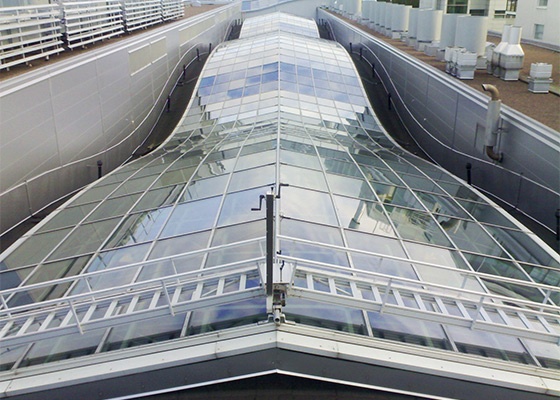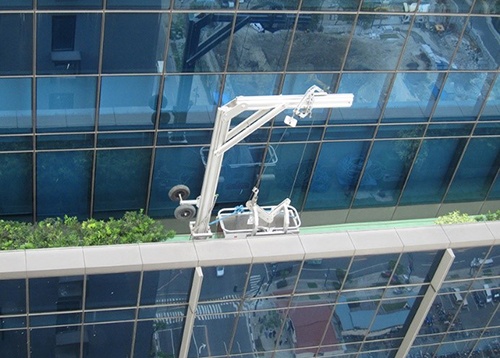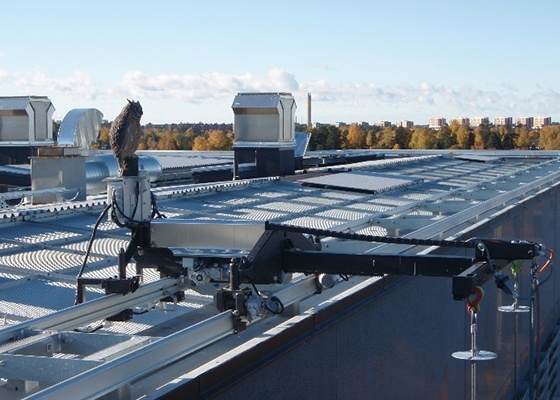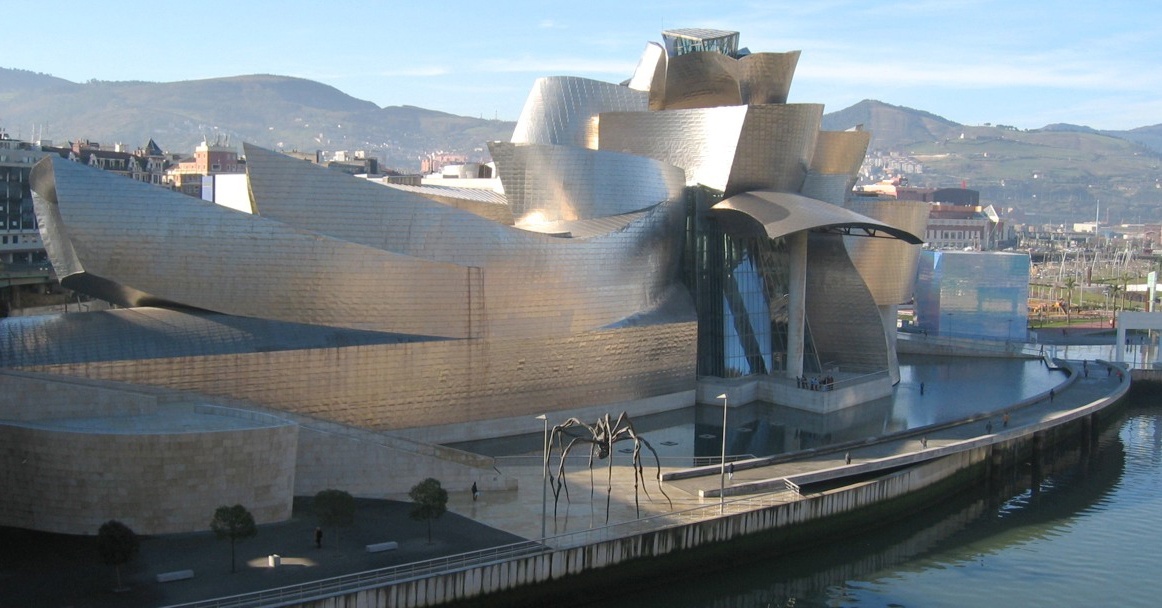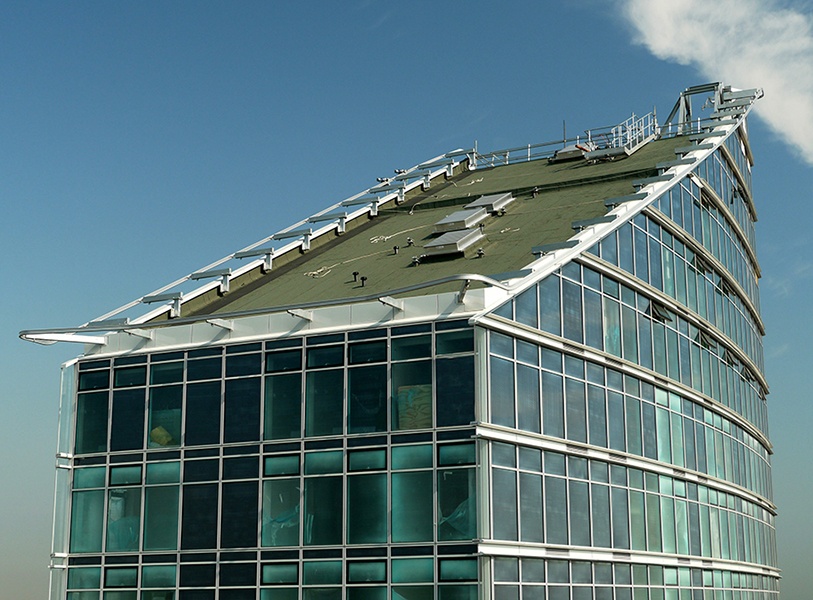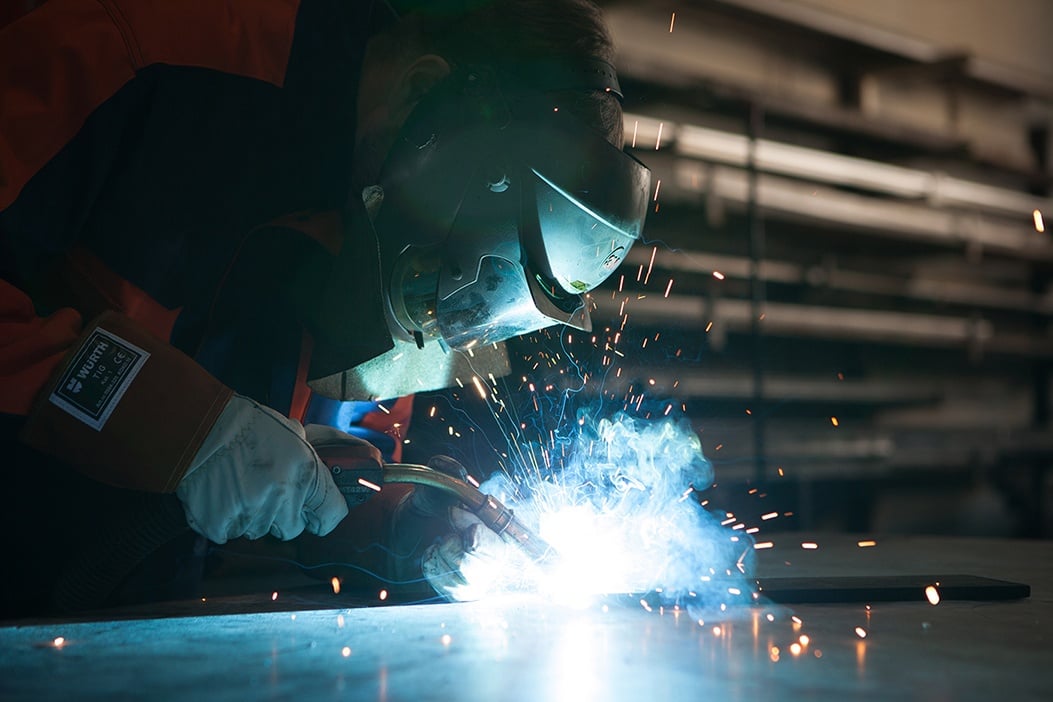Normal ladders are usually used to climb from one level to another. In many countries, “real work” from a ladder is not allowed unless it has some stable and safe platforms etc. However, bigger maintenance ladders can be used for light construction work, repairs and maintenance tasks like window cleaning especially if the ladders are traversing i.e. moving horizontally along the facade or glass roof.
What are the different types of maintenance ladders?
[fa icon="calendar'] 22/02/17 13:30 / by Niko Siltanen posted in Facade and glass roof access systems
Davit system: efficient facade access system for simple buildings
[fa icon="calendar'] 18/01/17 00:00 / by Niko Siltanen posted in Facade and glass roof access systems
A davit is originally is a special safety device especially for ships. It is most often used for supporting and lowering life boats and other small vessels from big ships. In facade access, the idea is the same: the davit is used for supporting, raising, and lowering BMU-cradles or modular suspended platforms (MSP’s). With this blog post you will get to know the Davit system and its possibilities.
Light roof trolley system – Smart non-visible facade access solution
[fa icon="calendar'] 12/01/17 12:01 / by Niko Siltanen posted in Facade and glass roof access systems
Do you need a “hidden” building maintenance unit (BMU) for your facade access? A roof trolley system (or roof car system) is not visible from the street below when it is not used. Light Roof trolleys from are sometimes confused with big roof car machines, which are crane-like machines with long, often telescopic jibs and the hoist on the roof. However, light roof trolley is a flat machine traversing on two parallel aluminium tracks mounted on top of the roof. This text explains the idea of a light roof trolley, when it should be used and what are the advantages and downsides of a light roof trolley system.
Top five architecture trends for 2017
[fa icon="calendar'] 21/12/16 08:45 / by Niko Siltanen posted in Trends, Not just access systems
As the final days of 2016 are almost over, it is time to look at the upcoming year of 2017. As always, it seems that there is always something new and something old that is coming up. Here are five of the biggest expected trends for 2017.
Monorail system: what is it and what is it best for?
[fa icon="calendar'] 13/12/16 08:40 / by Niko Siltanen posted in Facade and glass roof access systems
When talking about monorails, many of us think of a train travelling on a single track. The word MONO is Latin and means single and naturally a monorail is a single rail.
Interestingly, when we applied for the Patent for our unique monorail back in the 90s, one obstruction for our Patent was a German Patent from the 50's for a monorail for trains, made in steel and 10 times bigger but working exactly as our monorail. Well, we convinced the Patent Office we are not doing trains and got the Patent!
Introduction to facade and glass roof access systems
[fa icon="calendar'] 30/11/16 10:02 / by Niko Siltanen posted in Facade and glass roof access systems
If someone would have asked me a few months ago, if I know what a BMU (Building Maintenance Unit) or a monorail is, I would have said “no”. However, now I can explain the basics when it comes to the facade and glass roof access systems.
4 Struggles you will face when updating your company website
[fa icon="calendar'] 17/11/16 08:25 / by Niko Siltanen posted in Creating a website
Are you developing new website for your company or updating an old one? If the company already has a website, why should you change something that is already working? There are multiple reasons to update or create a completely new website. A simple reason is that the site is just looking old. For example, this is what Facebook used to look like in 2004:

